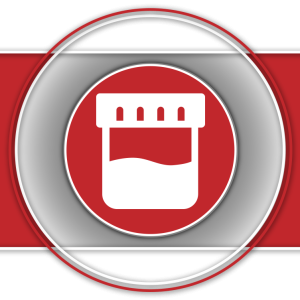Alabama Specialty Clinic provides drug testing solutions for individuals and businesses in every city in the United States. If you are an employer looking to institute a reliable drug testing program, a 5 panel drug test is an excellent option. Five panel drug screen tests are commonly used by the DOT and the federal government to check for Marijuana (THC), Cocaine (COC), Opiates (OPI), Amphetamines (AMP), and PCP. This 5 panel drug test is also used for most non-regulated companies and is also available for rapid testing with same day results at our locations throughout the United States including all LabCorp and all Quest Diagnostics locations.
Our 5 panel drug screening tests can also include additional specimen validity testing and expanded testing for MDMA and ecstasy, methamphetamines, 6-Acetylmorphine (6 AM - a metabolite of heroin), morphine, codeine, hydrocodone, oxycodone, hydromorphone, and oxymorphone. Our drug testing specialists here at Alabama Specialty Clinic will work prudently with you in order to provide you with exactly what you need individually or for your business.
Multi-Panel Drug Tests
All drug tests generally follow the same procedure where each panel is a specific drug being tested. For instance, a five panel drug screening tests for 5 drugs, whereas a 10 panel drug screening tests for 10 drugs. The standard 5 panel drug screening urine test is the most common and is routinely utilized by private employers, as well as government agencies, since it tests for the 5 most habitually abused substances: THC, Cocaine, Opiates, PCP and Amphetamines/Methamphetamines. In fact, the 5 panel drug test is the nationwide standard for the Federal government’s Mandatory Guidelines for Workplace Drug Testing, which is why it is used for the majority of workplace drug screenings. For instance, the DOT (Department of Transportation) requires their truck drivers to undergo a five panel urine drug test prior to employment and randomly throughout the year during their term of employment. DOT truck drivers are also required to submit to a 5 panel drug test after an accident, or if reasonable suspicion exists that a driver may be using illegal drugs.
THC
Tetrahydrocannabinol, or THC, is probably the most common substance that individuals are found positive for on drug screening tests. It is found naturally, and exclusively, in the marijuana, or cannabis plant. A pharmaceutical formulation, which is basically synthetic THC, is available by prescription and is known by the brand name Marinol. Marijuana can be found in various forms, including the dried flower buds, processed into hash or oil, or baked into foods such as cookies or brownies. Users can either smoke the hash, oil or dried buds, or eat the baked goods. Inhalation or consumption of cannabis produces mild to moderate analgesic effects. This includes feelings of relaxation and euphoria, but can also lead to feeling anxious or paranoid. Marijuana is also used to relieve pain since it alters transmitter release in the periaqueductal gray (PAG) and the dorsal root ganglion in the spinal cord. THC has also been known to stimulate the appetite and is prescribed for such purposes when a suppressed appetite is the effect of a disease or cancer treatment such as radiation therapy. Although many states recognize the medicinal uses of marijuana and allow its legal prescription, the Federal government classifies it as a schedule 1 drug with no medicinal value. Therefore, THC is still tested for in all standard 5 panel drug tests, regardless if it is legalized in a particular state.
DOT strictly prohibits the use of marijuana for safety sensitive employees including truck drivers. Employers in all States have a right to implement a drug free workplace which can include a policy which prohibits marijuana use and allows the employer to have disciplinary consequences for a positive marijuana drug test.
Cocaine
Cocaine, or coke, is a strong stimulant generally used as a recreational drug. It is processed from the leaves of the coco plant that is native to South America. Cocaine is usually in the form of a white powder and is often mixed with similar looking powders, such as baking soda, as fillers. It is usually inhaled or snorted, or injected in order to produce its effects of wakefulness and/or numbing. It is also used as an appetite suppressant. The Federal government recognizes cocaine as a schedule 2 drug with a much higher potential for addiction and abuse than Schedule 1 drugs. Habitual use of cocaine is likely to result in physical or psychological dependence so it is considered very dangerous and is tested for in all 5 panel drug tests.
Amphetamines
Amphetamines are usually found in pill form and are susceptible to artificial fillers much like cocaine, since it is often crushed by the user for snorting. Some common forms include Adderall and Ritalin, which are used to treat ADD and ADHD. Amphetamines are also stimulants and appetite suppressants, much like cocaine but to a lesser extent. They are well known to be used among college and high school students as a “study drug” since they allow the user to stay alert and awake longer, and be much more focused. Methamphetamine, or “meth”, is a form of amphetamine that is found as a powder or in crystallized form and is highly dangerous and addictive. Meth creates a strong and violent addiction, and requires a larger amount with each use to experience the same high. Prolonged use destroys dopamine receptors and will make it impossible to feel pleasure. Amphetamine, and Methamphetamine, is considered a schedule 2 drug with high potential for abuse resulting in dangerous physical dependence or psychological addiction. Although it is available by prescription, it is illegal to use amphetamines recreationally.
The five panel drug test when detecting Amphetamine, and Methamphetamine will also identify 3, 4-methylenedioxy-methamphetamine (MDMA) a synthetic drug known as Ecstasy or Molly.
Opiates
Opiates are used to create drugs such as heroin, and other medicinal painkillers like morphine. It is derived from the opium poppy plant originating in South-East Asia. Opiates increase euphoria and reduce pain in the user. They can be snorted, smoked or injected. Both physical dependence and psychological addiction is very strong. There are many variations, some legitimately used in the medical field, so the DEA schedules them differently. For example, heroin is a schedule 1 while Vicodin is a schedule 3 drug.
Phencyclidine
Phencyclidine, also known as PCP or angel dust, is legitimately made as an animal tranquilizer, which is often stolen or made in laboratories illegally. It is either in the form of a clear, yellowish liquid or in a powder. PCP is taken in a variety of different ways, including snorting, smoking, and injecting. The effects are dangerous hallucinations, and prolonged use can result in states similar to schizophrenia. PCP is considered by the Federal government to be a schedule 2 substance.
Those are the most commonly abused substances that Alabama Specialty Clinic will screen for during a 5 panel drug screen test. Although most private employers in the United States have a variety of options when it comes to the type of drug test (4 panel drug test, 5 panel drug test, 7 panel drug test, 10 panel drug test, etc.), as well as the testing specimen (blood, urine, hair, or saliva), most stick with the industry standard 5 panel drug screening test. For that reason, unless you have the need to test for a specific substance that is not included in the five panel drug test, Alabama Specialty Clinic recommends sticking with the standard 5 panel. All drug testing panels can be ordered from Alabama Specialty Clinic.


